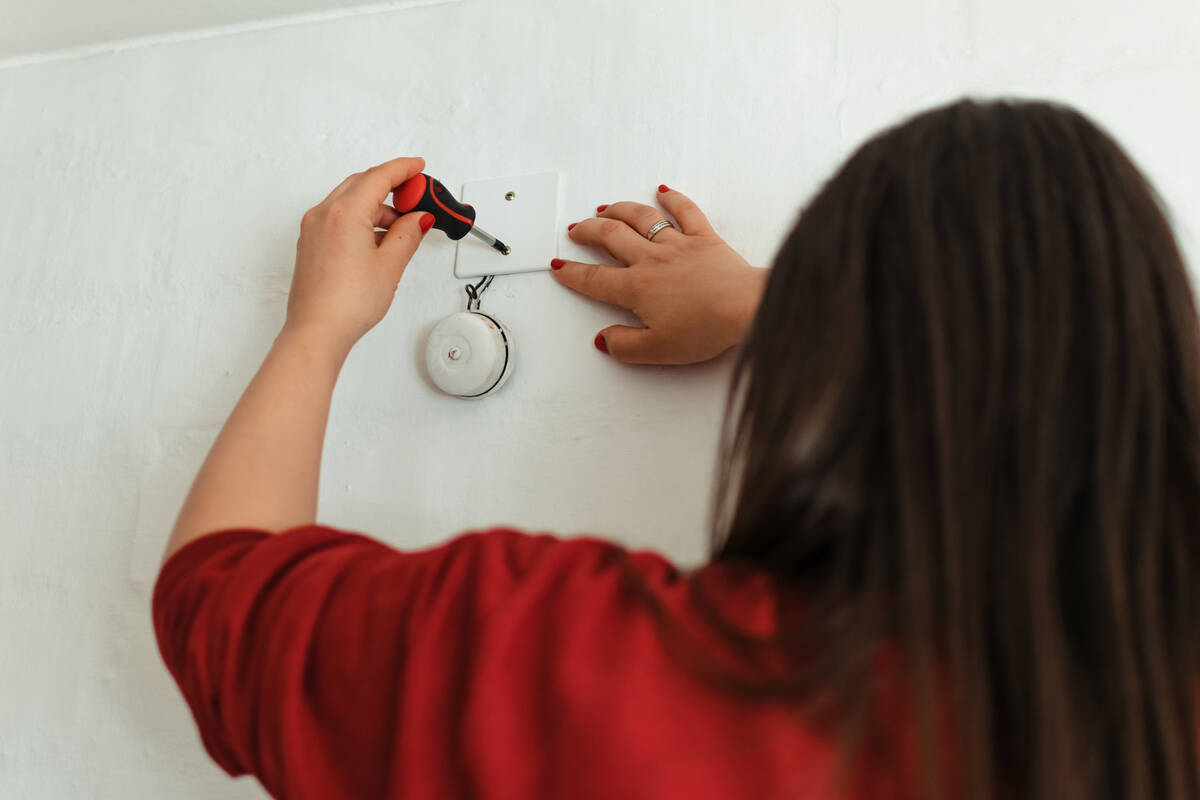Purchase multitester to figure out problem with doorbell
Q: For whatever reason, my doorbell has stopped working. I pulled the button away from the wall to check that the wires are still connected, which they are. Now what?
A: Your first option is to buy a remote-operated doorbell for about $25. With this, you stick the new button on the wall and then plug the chime into a nearby outlet. However, a more durable, long-term solution would be to diagnose and fix the problem.
Most doorbell problems are caused by loose wire connections or worn-out switches. To test your system, you will need a multitester (less than $15), which checks voltage and continuity. It will even test batteries for you.
Start by removing the screws that hold the doorbell button to the house. Pull it away from the wall and check that the two wires are securely fastened to the unit. If they aren’t, tighten the screws then test the doorbell.
If it still doesn’t work, disconnect the wires and test the doorbell with the continuity tester. If the meter registers no continuity, the doorbell button needs replacing.
If the button is OK, twist the wires together to test the other parts of the system (don’t worry, this is a low-voltage system, so it won’t curl your hair). Look for the doorbell’s transformer, which is a small metal box about 3 inches tall by 3 inches wide and is likely located near the ceiling in your garage. The transformer has two screws on it with one wire attached to each screw and will have a voltage rating of less than 20.
Set the dial of the multitester to the 50-volt setting, then touch the probes of the multitester to the screw terminals on the transformer. You should get a reading within a few volts of the actual rating on the transformer.
If not, replace the transformer (about $15).
If you get no reading, there may be a loose wire in the box that the transformer sits on. Shut off the power to the transformer at the main panel, remove the cover of the box, then check that the connections are secure.
If the multitester showed the proper voltage, move to the chime unit.
Remove the cover and inspect the low-voltage wire connections. If any are loose, reconnect them.
Next, take the multitester (at the 50-volt setting) and touch the screw terminals inside the chime unit. If the reading shows power within a few volts of the transformer rating, then the chime is receiving the proper current from the transformer. If the test shows no or low power, then there is a break in the low-voltage lines, and new wiring must be installed.
Reassemble the doorbell system and push the button. If the chime doesn’t sound, you need to replace it.
Mike Klimek is a licensed contractor and owner of Las Vegas Handyman. Questions may be sent by email to handymanoflasvegas@msn.com. Or, mail to 4710 W. Dewey Drive, No. 100, Las Vegas, NV 89118. His web address is www.handymanoflasvegas.com.
Do-it-yourself
Project: Troubleshoot a doorbell
Cost: From around $15
Time: Around 1 hour
Difficulty: ★★






























